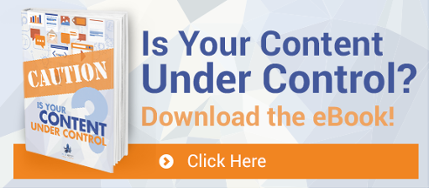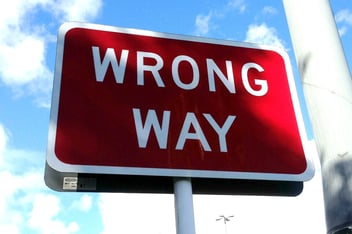
The answer to this question is probably more complex than you think (or want to believe). Over the past few years, many bloggers have pushed for 500–800-word (on average) blog articles, thinking that was the sweet spot. They weren’t necessarily wrong, but if we don’t keep learning and evolving with the latest SEO advancements and effective tactics, we’ll quickly lose touch, and our strategies will lose their value.
Numerous studies have been released showing that longer blog articles typically receive many more views and better engagement than shorter ones. This news may make you want to cry (if writing isn’t your forte) or rejoice (if you’ve felt stifled in the past trying to stick to this limiting blog length).
So, what blog post length should content marketers and writers aim for? Unfortunately, the answer isn’t black and white. (Is it ever, really?) It depends on several factors, which we’ll start to dissect today. Bear with us, and by the end, you’ll have a much better idea of how long your blog articles should be to bring your website more traffic and overall success!
Always Put Quality Content First
Before we discuss article length, we need to emphasize the number one most important factor in terms of SEO and ranking—quality content. We’ve been pushing this for years. It’s always been important, and it always will be. In fact, Google and other major search engines are pushing the importance of this more and more every year!
If your content goals are still centered around producing mass amounts of content on your websites simply to make your website larger and produce a constant flow of content to rank higher on search engines, you need to reevaluate your strategy because you’re missing one of the main pillars of success.
You could have fifty 4,000-word articles on your website, but if the substance is terrible (unengaging, irrelevant, outdated, spammy, or just poorly written and structured), you’ve been wasting your time and resources. This is why it's crucial to hire a professional writer (if you don’t already have one) who stays up to date with the latest SEO best practices and can write in a way that connects with your target audience.
Aim for the Right Length
We’ll start tackling this by sharing a few studies with you. Moz found that articles that were 3,000–10,000 words long received an enormously larger number of social shares across various social media platforms than shorter articles.
Backlinko analyzed 1 million Google search results and found that
- “Topically relevant,” comprehensive content greatly outperformed content that didn’t cover a topic in depth
- “The average word count of a Google first page result was 1,890 words”
1,890 is quite different than 3,000—we see that. But then again, we aren’t comparing apples to apples here (social shares vs. ranking first on Google). Our key takeaway is that long-form content (which Neil Patel does a great job of explaining in his blog article about evergreen long-form content) receives a lot more traffic and engagement than shorter pieces of content.
According to Neil, your new blogging strategy should be to produce high quality blog posts that are 2,000+ words long. Why? Because it will help you stand out from the thousands or millions of other websites fighting for the same space as you in search engine results. Here are some other great reasons to incorporate this forward-thinking inbound marketing strategy:
- Long-form content is perceived as high quality.
- People seeking in-depth information on a topic will find more comprehensive answers in longer posts.
- Longer articles often hold more value.
- Writing in depth on relevant topics will show you’re an expert in your field.
- You’ll build trust with readers and be perceived as an industry leader.
Industry-Specific Blog Article Length Suggestions
Based on various studies, Neil Patel came up with the following average word counts to aim for in blog posts for specific industries. Use your discretion as you take them into account, and remember that high quality content is always the overarching goal. Some topics require more words to cover comprehensively than others.
- Finance: 2100–2500 words
- Manufacturing: 1700–1900 words
- Retail: 1500–1700
- Home/Garden: 1100–1200
- Technology: 800–1000 words
- Gadgets: 300–500 words
- Marketing: 2500–3000 words
- Healthcare: 2000–2150 words
- Travel: 1500–1850 words
While Neil Patel doesn’t have a secret connection with Google to feed him these stats, he does live and breathe inbound marketing by doing considerable research and working with industry leaders to arrive at these figures. He’s become an industry leader himself by following SEO best practices and continuing to learn and grow his knowledge base.
Other Blogging Factors You Need to Consider
We know there’s more to blogging than quality content and article length. You also need to consider these important factors:
Your Goal
Make sure you always have a goal (or goals) in mind that you’re working toward when you write. Do you want people to download an ebook after they read your article? Do you want to convert a visitor into a lead? Is your primary goal to educate or increase brand awareness? Do you want to improve your website’s SEO? These are all good, achievable goals if you have the right focus and proper execution.
Your Writing Style
This could affect your article length and depends on your audience. A highly technical article about law or consulting will be written differently than a more casual article about home remodeling. A conversational piece about dog training will be written differently than a staightforward, highly visual article about a new gadget that states quick facts concisely.
How Frequently You Publish
If you publish an article every day, it may not be necessary to write super long articles as often. You might go in depth talking about a specific topic but spread it across three or four different articles in a blog post series rather than writing one longer article; depending on your followers and blogging frequency, this could work successfully. If you post only once a week, on the other hand, a longer article may be much more effective than several short ones when it comes to reaching a larger audience and comprehensively covering a topic.
What Your Article Covers
Some topics need extensive coverage, while others are simpler and don’t require a lot. Regardless of your industry, this will most likely vary from topic to topic, so your blog articles will naturally vary in length.
Article Format
Break up your article into smaller, easily digestible pieces so people aren’t scared away and can quickly skim the content to find what they’re looking for. Make sure to include headings and subheadings, at least one image, and short paragraphs.
Your Target Audience
This one is obvious. If your content isn’t targeted to offer advice, information, or solutions for your target consumers, what’s the point of it? It won’t get read by the right people.
Bringing It All Back
All of these factors can impact article length, but that certainly doesn’t make the length suggestions we made earlier irrelevant. Those studies provide real numbers from content marketing experts. If you go to Google right now and type in a random topic, like “planting wildflowers in your garden” or “what is inbound marketing,” you’ll most likely find long-form blog articles or web pages show up first. Test it out for yourself!
Do you agree with what we’ve covered in this article? We’d love to hear what you think. Leave your comments below!
Blue Frog Marketing is an inbound marketing company with offices in Denver, Des Moines, and Huron. We work with customers across the country, providing web design and development, professional writing, and strategic management services. If we can help you with any of your marketing efforts, give us a call or click below to set up a consultation with us!





